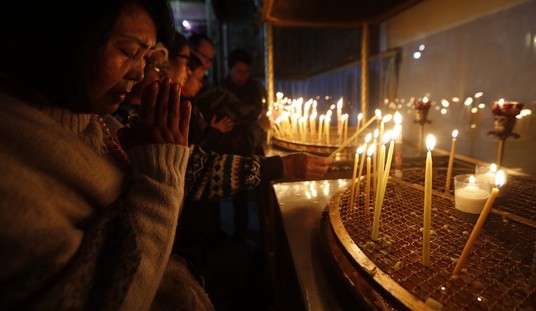Enrollment in Obamacare insurance programs on the state exchanges is less than half of what was predicted by the Congressional Budget Office in 2013.
The CBO projected 24 million people would sign up on the exchanges in 2016. The actual number is 11.1 million. In addition to the lax enrollment numbers, it is estimated that 25% of all counties in America will have only one option for insurance on the exchanges next year.
Obamacare advocates continue to insist that the program is still viable even with reduced enrollment. But experts say they’re whistling past the graveyard.
“Enrollment is key, first and foremost,” said Sara R. Collins, a vice president at the Commonwealth Fund, a nonpartisan foundation that funds health-care research. “They have to have this critical mass of people so that, by the law of averages, you’re going to get a mix of healthy and less healthy people.”
A big reason the CBO projections were so far off is that the agency overestimated how many people would lose insurance through their employers, which would force them into the exchanges. But there have been challenges getting the uninsured to sign up, too.
The law requires every American to get health coverage or pay a penalty, but the penalty hasn’t been high enough to persuade many Americans to buy into the health plans. Even those who qualify for subsidized premiums sometimes balk at the high deductibles on some plans.
And people who do outreach to the uninsured say the enrollment process itself has been more complex and confusing than Obama’s initial comparison to buying a plane ticket.
“This exchange will allow you to one-stop shop for a health-care plan, compare benefits and prices, and choose a plan that’s best for you and your family,” Obama said in a speech in 2009. “You will have your choice of a number of plans that offer a few different packages, but every plan would offer an affordable, basic package.”
In some markets, a shortfall in enrollment is testing insurers’ ability to balance the medical claims they pay out with income from premiums. In an announcement curtailing its involvement in the exchanges this month, Aetna cited financial losses traced to too many sick people signing up for care and not enough healthy ones.
The health-care law has been a political lightning rod from the beginning, and Republican legislators have used insurance companies’ withdrawals from the exchanges to reignite calls for the law’s repeal.
Kaiser tracks public data on insurer participation in the exchanges to project how many options counties will have, but the numbers are not final. This year, exchanges in about 7 percent of counties had just one insurer. Earlier this month, Aetna announced that it will pull out of 11 of the 15 states where it offers coverage on the health-care exchanges. Humana made a similar decision weeks earlier, planning to exit several states. And last spring, UnitedHealth Group said it would remain in three or fewer exchanges next year.
The fact that the number of people who were uninsured has gone down is irrelevant. Almost all the decrease in the uninsured is due to an increase in Medicaid clients. But even these figures are misleading. Most of the new signups for Medicaid since 2012 were eligible before Obamacare passed. And it’s a dubious celebration when the Centers for Medicare and Medicaid Services says that spending on Medicaid is already “unsustainable.” Piling millions of people on to a broken system is hardly a reason to pop the cork.
With some states seeing an increase of 20-60% in premiums, the tipping point has already been reached and a death spiral has begun. By this time next year, it is likely that Congress is going to have to deal with the collapse of many state exchanges that will have to close shop because there are no insurance companies willing to sell in the marketplace. Will this lead to chaos in the insurance industry, or can it be managed to mitigate at least some of the adverse consequences? Millions of Americans want to know.










Join the conversation as a VIP Member